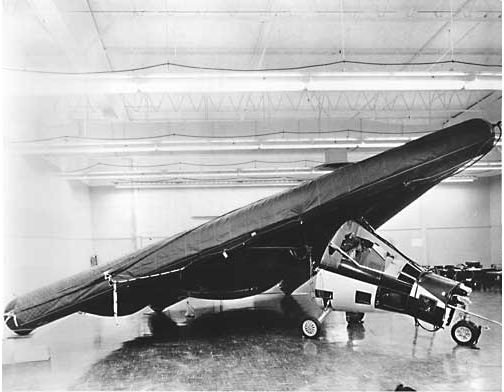Advanced Re-entry Concepts for Spacecraft
Larger wings?
Aerodynamic heating is always an issue with re-entry vehicles, since they can comprise a significant fraction of the weight and/or expense of the system. The steepness of a re-entry vehicle’s trajectory is directly related to its ballistic coefficient or wing loading; the wing loading (vehicle weight per unit wing area) is often used, since it is based on only two terms. A large wing is ideal, but, since drag is proportional to both lift and area, it also experiences more aerodynamic heating, especially as air density increases closer to the ground, and increases weight. While waveriders are ideal for high-speed cruise, a large physical wing area tends to be incompatible with high-speed flight due to drag effects (the very effects we want in order to slow down at high altitude!). One novel solution to this dilemma would be to have a jettisonable or detachable wing to increase lift and allow the space vehicle to decelerate further while staying at high altitudes for as long as possible. Such a low wing-loading deployable vehicle was proposed for use as a single-person re-entry capsule during the 1960s, and the concept, if not necessarily the technology, was sound even at the time.
Thermal Protection System
A slower re-entry profile would also provide the opportunity to rely on radiative cooling to stay within temperature limits - this, in turn, might make it practical to use less exotic and expensive materials for thermal protection. A number of proposed TPS (Thermal Protection System) materials (ultra-high temperature ceramics and metallic systems are two promising and complementary candidates) have been investigated as new-generation replacements for the Shuttle’s TPS, so they should have no difficulty coping with these flight conditions. However, this configuration would still have to deal with thermal effects on the linkages between the “glider” stage and the main vehicle, and the glider would have to be boosted back into orbit or returned to Earth separately (or be disposable).
Fuels
If a powered re-entry is to be flown, a critical question is, “what fuel should be used?” At entry altitudes, the density of air is still too low to rely on airbreathing propulsion, but rockets require oxidizer, which will add mass. Both the fuel’s energy density per unit volume and per unit mass are important here, and, while liquid hydrogen is good from a mass standpoint, it is far less than ideal from a volume perspective. Metal-organic frameworks engineered to maximize surface area and temporarily bind with hydrogen may provide a way to store hydrogen at a density approaching gasoline while only requiring liquid nitrogen to provide cooling.
Conclusion
All of the concepts mentioned in this two-part article are bleeding-edge at the very least, but who knows? Financial incentives and the push for technological innovation may change the face of human spaceflight sooner rather than later!
Credits
Paresev image courtesy of NASA
This post is part of the series: Atmospheric Re-Entry: Advanced Concepts
Re-entering the earth’s atmosphere has been done either ballistically, like the Apollo capsules or under more controlled, glided flight like the Space Shuttle. There is cutting-edge technology that may provide some alternatives to these tried and true methods.
